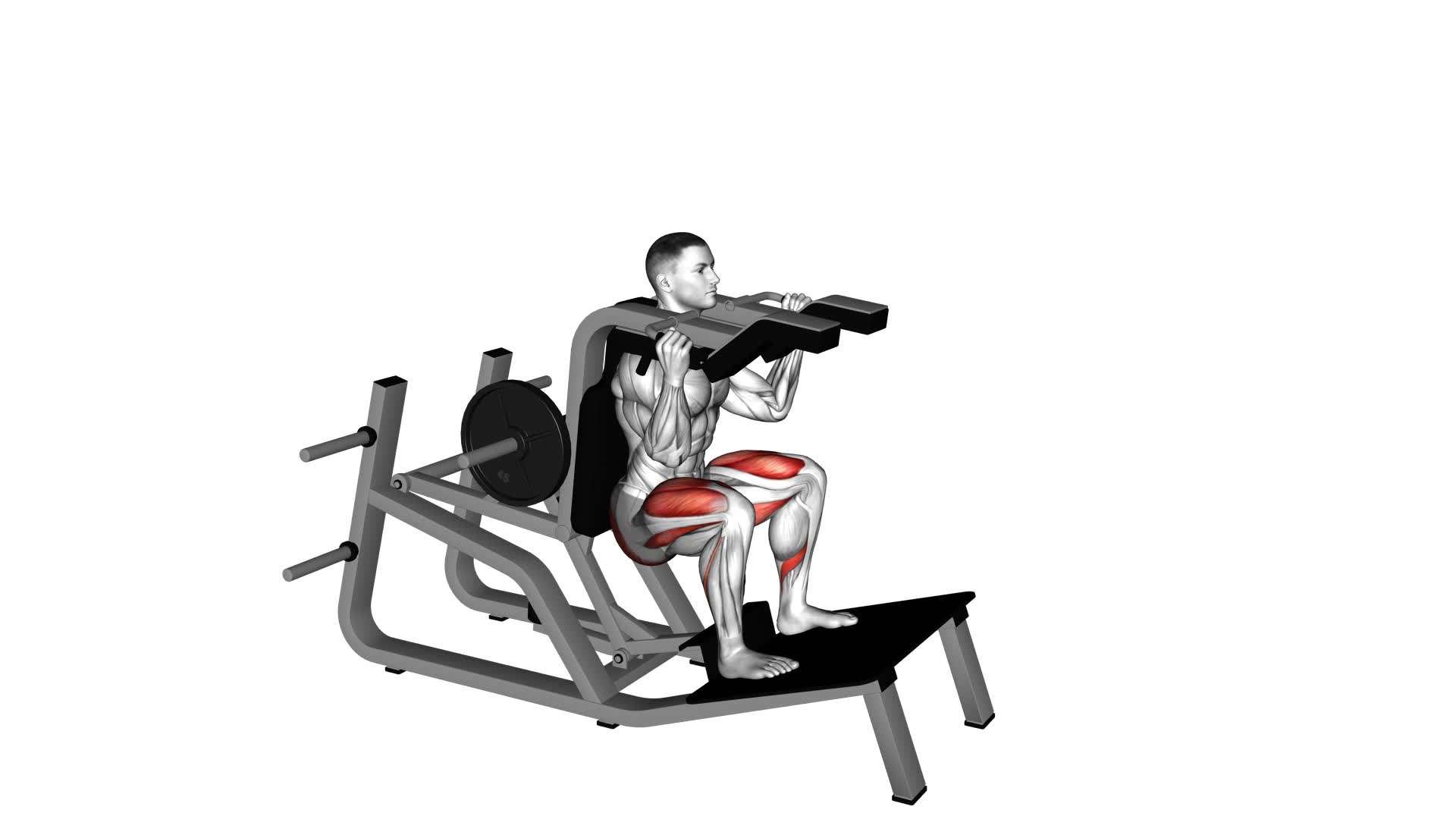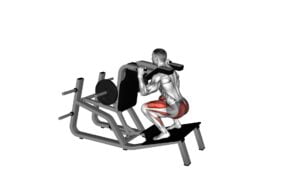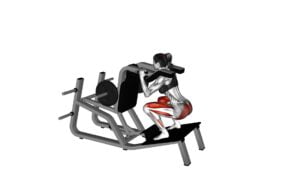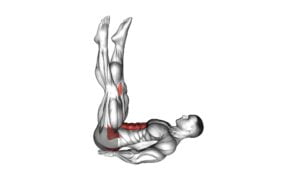Lever Vertical Squat – Video Exercise Guide & Tips

Are you looking to level up your squat game? Look no further than the lever vertical squat.
Watch This Exercise Video
In this video exercise guide, we'll show you the correct form and technique to maximize your gains.
With essential equipment and advanced variations, you'll be able to take your workouts to new heights.
Say goodbye to common mistakes and hello to a stronger lower body.
Grab your weights and get ready to squat like never before.
Let's dive in!
Key Takeaways
- Lever Vertical Squat enhances balance and stability.
- Lever Vertical Squat targets multiple muscle groups simultaneously.
- Lever Vertical Squat builds strength in quadriceps, hamstrings, and glutes.
- Lever Vertical Squat engages core, calves, and lower back.
Benefits of Lever Vertical Squat
You can experience numerous benefits from incorporating the Lever Vertical Squat into your workout routine. This exercise isn't only effective in building strength but also in improving balance and targeting multiple muscle groups.
One of the key benefits of the Lever Vertical Squat is its ability to enhance your balance. By engaging your core muscles and stabilizers, this exercise challenges your body to maintain proper form and control throughout the movement. This can help improve your overall balance and stability, making you less prone to falls and injuries in everyday life.
Additionally, the Lever Vertical Squat is a compound exercise that targets multiple muscle groups simultaneously. It primarily works your quadriceps, hamstrings, and glutes, but also engages your core, calves, and lower back. By incorporating this exercise into your routine, you can effectively strengthen and tone these major muscle groups, leading to enhanced overall strength and a more sculpted physique.
Incorporating the Lever Vertical Squat into your workout routine can provide you with a range of benefits, from improving balance to targeting multiple muscle groups. By adding this exercise to your repertoire, you can take your fitness to the next level and achieve your goals in a more efficient and effective manner.
Correct Form and Technique
To execute the Lever Vertical Squat with proper form and technique, focus on maintaining a stable and controlled movement throughout. Here are three key tips to ensure proper alignment and muscle activation:
- Start with proper alignment:
Stand with your feet shoulder-width apart and your toes pointing slightly outward. Keep your chest lifted and your core engaged. This will help you maintain a strong and stable position throughout the exercise.
- Control the descent:
As you lower yourself into the squat, focus on keeping your knees in line with your toes and your weight evenly distributed through your heels. Avoid letting your knees collapse inward or shifting your weight too far forward. This will help protect your knees and maximize muscle activation in your glutes and quads.
- Drive through your heels:
As you rise back up from the squat, push through your heels and engage your glutes and hamstrings. This will help you maintain proper form and activate the muscles in your lower body more effectively.
Essential Equipment for Lever Vertical Squat
To properly execute the Lever Vertical Squat and maximize your results, it's important to have the essential equipment. There are various lever vertical squat variations that you can perform, each targeting different muscle groups and providing unique challenges. To choose the right lever for vertical squats, consider your fitness level and goals.
When it comes to essential equipment, the lever is the most important component. It provides stability and support during the exercise. Make sure to choose a lever that's sturdy and can handle your body weight. Look for a lever with adjustable height settings, so you can customize the squat range to your comfort level. Additionally, consider the grip of the lever. It should provide a secure and comfortable hold, allowing you to focus on your form and technique.
Apart from the lever, you may also need additional equipment depending on the variation of lever vertical squat you choose. This may include resistance bands, weights, or a bench for added challenge or support. Make sure to choose equipment that's appropriate for your fitness level and goals.
Having the right equipment is essential for performing lever vertical squats effectively and safely. Invest in quality equipment that suits your needs, and you'll be on your way to achieving your fitness goals.
Common Mistakes to Avoid
Avoiding common mistakes is crucial for maximizing your results while performing the Lever Vertical Squat exercise. To ensure proper execution and avoid setbacks, be mindful of the following:
- Improper alignment: One of the most common mistakes isn't maintaining proper alignment throughout the movement. Make sure your feet are shoulder-width apart, knees are tracking over your toes, and your back remains straight. This will help prevent unnecessary strain on your joints and ensure optimal muscle engagement.
- Lack of depth: Another mistake isn't squatting to a deep enough position. Going too shallow can limit the effectiveness of the exercise and hinder your progress. Aim to lower your hips until your thighs are parallel to the ground or slightly below. This will engage your glutes, quads, and hamstrings more effectively.
- Using momentum: It's important to perform the Lever Vertical Squat with controlled movements rather than relying on momentum. Avoid any sudden jerking or bouncing motions, as this can increase the risk of injury and reduce the effectiveness of the exercise. Focus on a slow and controlled descent and ascent to fully engage your muscles.
By being mindful of these common mistakes and executing the Lever Vertical Squat correctly, you'll optimize your results and minimize the risk of injury.
Now, let's explore some advanced variations and modifications to further challenge your workout routine.
Advanced Variations and Modifications
To further challenge your workout routine and enhance your results, let's explore some advanced variations and modifications of the Lever Vertical Squat exercise. These advanced modifications are designed to take your training progressions to the next level and target different muscle groups in your lower body.
One advanced modification of the Lever Vertical Squat is to add resistance bands or weights. By incorporating these additional challenges, you can increase the intensity of the exercise and stimulate further muscle growth. Start by attaching resistance bands to the bar of the lever squat machine or hold dumbbells in your hands during the exercise.
Another modification you can try is the single-leg Lever Vertical Squat. This variation requires more stabilization and balance, engaging your core and targeting each leg individually. Begin by lifting one leg off the ground and perform the squat with the other leg. Switch legs after completing a set.
Furthermore, you can also incorporate plyometric movements into the Lever Vertical Squat, such as jump squats. This explosive movement helps to develop power and strength in your lower body. Start by performing a regular Lever Vertical Squat and then explode upwards into a jump when you reach the top position.
Frequently Asked Questions
How Many Calories Can You Burn by Doing the Lever Vertical Squat?
You can burn a significant amount of calories by doing the lever vertical squat.
This exercise targets multiple muscle groups, including your quadriceps, glutes, and hamstrings.
It's a high-intensity movement that requires you to engage your entire lower body.
Can the Lever Vertical Squat Help Improve Your Vertical Jump?
The lever vertical squat can improve your vertical jump. It helps build strength in your legs and core, which are essential for explosive power.
When performed with proper form and technique, this exercise targets the muscles used for jumping, such as the glutes, quadriceps, and calves.
Is It Safe to Do the Lever Vertical Squat if You Have Knee Problems?
If you have knee problems, it's important to consider the safety of doing the lever vertical squat. The lever vertical squat puts significant stress on the knees, which can worsen knee pain and potentially lead to injury. It's recommended to consult with a medical professional before attempting this exercise.
If you're looking for alternative exercises that are more knee-friendly, there are several options available such as lunges, step-ups, and leg presses.
How Often Should the Lever Vertical Squat Be Incorporated Into a Workout Routine?
Incorporating the lever vertical squat into your workout routine has numerous benefits. It targets your lower body muscles, including your quadriceps, glutes, and hamstrings.
The frequency of doing this exercise depends on your fitness level and goals. For beginners, it's recommended to start with 2-3 times per week and gradually increase to 4-5 times as you get stronger.
Remember to always listen to your body and give yourself enough rest between sessions to prevent overtraining and allow for muscle recovery.
Can the Lever Vertical Squat Be Done by Beginners or Is It More Suitable for Advanced Fitness Levels?
The Lever Vertical Squat can be done by beginners, but it's more suitable for advanced fitness levels. This exercise requires a good level of strength, balance, and coordination. Beginners may find it challenging at first, so it's important to start with lighter weights and focus on proper form.
As you gain strength and confidence, you can gradually increase the weight and intensity of the exercise. Always consult with a professional trainer before attempting any new exercise.
Conclusion
In conclusion, the lever vertical squat is a highly beneficial exercise that targets multiple muscle groups and improves overall strength and stability. By maintaining correct form and technique, using the essential equipment, and avoiding common mistakes, you can maximize the effectiveness of this exercise.
For those looking for a challenge, advanced variations and modifications can be incorporated to further enhance the workout. Incorporate the lever vertical squat into your routine to achieve improved fitness and body composition.

Author
Years ago, the spark of my life’s passion ignited in my mind the moment I stepped into the local gym for the first time. The inaugural bead of perspiration, the initial endeavor, the very first surge of endorphins, and a sense of pride that washed over me post-workout marked the beginning of my deep-seated interest in strength sports, fitness, and sports nutrition. This very curiosity blossomed rapidly into a profound fascination, propelling me to earn a Master’s degree in Physical Education from the Academy of Physical Education in Krakow, followed by a Sports Manager diploma from the Jagiellonian University. My journey of growth led me to gain more specialized qualifications, such as being a certified personal trainer with a focus on sports dietetics, a lifeguard, and an instructor for wellness and corrective gymnastics. Theoretical knowledge paired seamlessly with practical experience, reinforcing my belief that the transformation of individuals under my guidance was also a reflection of my personal growth. This belief holds true even today. Each day, I strive to push the boundaries and explore new realms. These realms gently elevate me to greater heights. The unique combination of passion for my field and the continuous quest for growth fuels my drive to break new ground.







